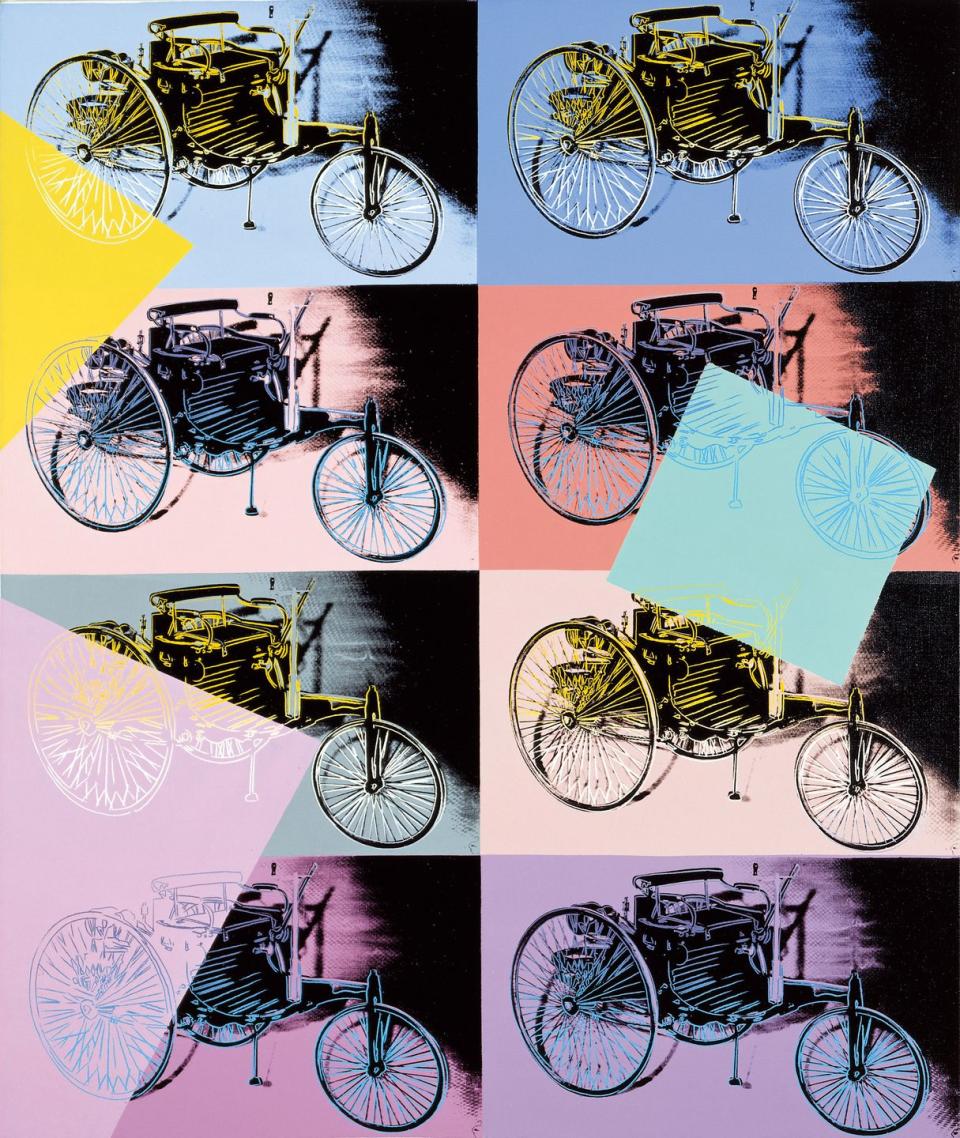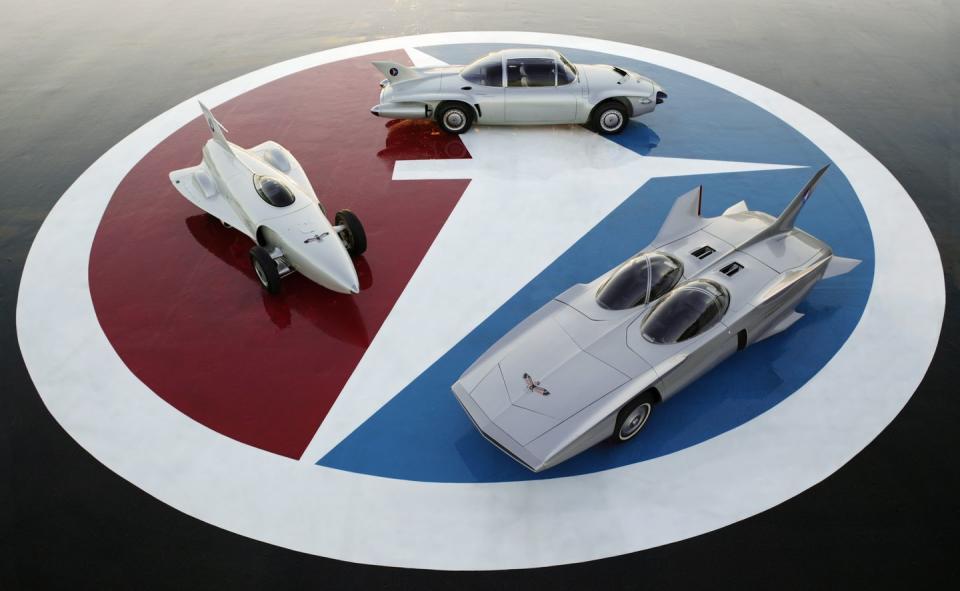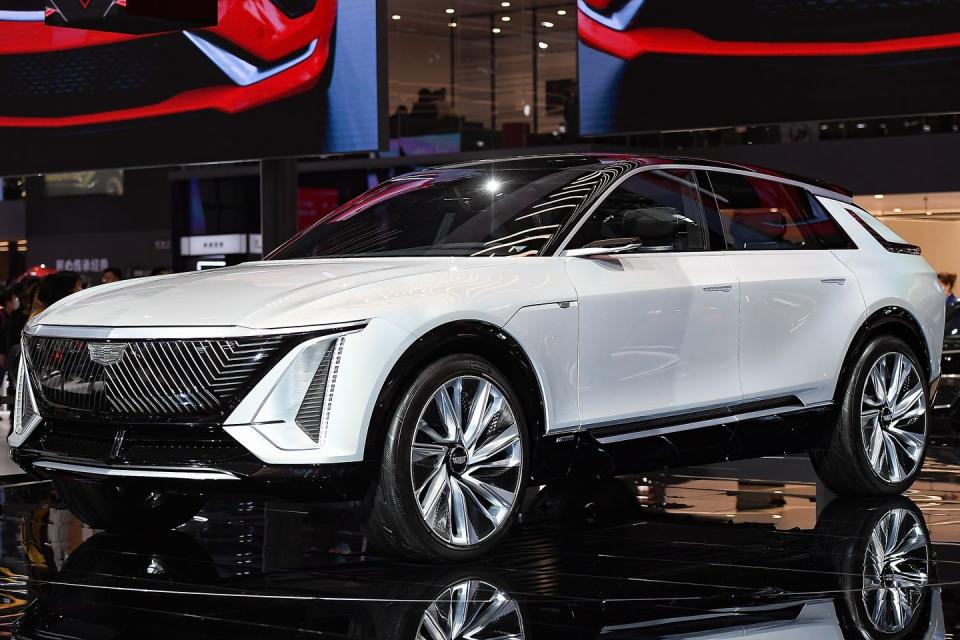Guggenheim Bilbao Melds Art, Architecture, Automobiles

A new exhibit opening April 8 at the Guggenheim Bilbao in Spain explores the relationship between art and the auto.
The Frank Gehry-designed museum opened in 1997 and will feature seven galleries of autos and art.
It runs through September 18, so get there this summer.
Does art imitate life or is it the other way around? Does the streamlined aerodynamic shape of a stunningly sculpturous coupe influence the style of a building? And is it all art to begin with? A new exhibit at The Guggenheim Bilbao in Spain dives into those questions and many more—and might even offer some answers.
Opening April 8 and running through September 18 in the beautiful seaside port town, “Motion. Autos, Art, Architecture” takes on this formidable task and does it not only with aplomb, but with sponsorship from electric-car maker Volkswagen and a utility called Iberdrola, the Spanish equivalent of the Pacific Gas and Electric.
The ultimate goal, at least from its corporate sponsorship, may be to legitimize the coming electric-car revolution, but it takes its own meandering sweet time getting there, not unlike the way the River Nervion wraps itself languidly through Bilbao itself, and eases up to the ramparts of the museum on its way out to the Cantabrian Sea in the Bay of Biscay.
Or am I reading too much into it?

“The exhibition celebrates the artistic dimension of the automobile and links it to the parallel worlds of painting, sculpture, architecture, photography, and film,” read a dosier provided by the Guggenheim. “Taking a holistic approach, the exhibition challenges the separate silos of these disciplines and explores how they are visually and culturally linked.”
So, they are linked? Aha! All those cool French classics of the 1930s really did influence the Art Deco Movement, and vice versa. And, from our perspective anyway, and that of the exhibitors, it was the car that was literally and figuratively leading the way.
“Unlike any other single invention, the automobile has completely transformed the urban and rural landscape of our planet and in turn our lifestyle,” the Guggenheim says before tying it all together into our shared electric future. “We are on the edge of a new revolution of electric power, so this exhibition could be seen as a requiem for the last days of combustion.”

That interplay has been in place since the invention of the automobile, which the Goog says started in the 1830s with Robert Anderson’s first electric car. Most automotive historians trace the auto age to Karl Benz’s 1888 offering of the three-wheeled Benz Patent Motorwagen. Whether the automobile is coming up on 200 years old or 134, its influence on the world in which we live is undeniable. And it is that influence, in all its flowering intricacy, that the Guggenheim is celebrating.
The concept and design of the show comes from architect Lord Norman Foster, who designed, among many other things, the Hearst Tower in New York where Autoweek’s expense checks are signed. Small world.
The exhibit and the history it portrays are broken up into seven separate galleries: Beginnings, Sculptures, Popularizing, Sporting, Visionaries, Americana, and Future. Each has its own automobiles and the examples of objects those automobiles influenced.
“Each gallery in this unique exhibition addresses a particular historical moment or theme in which the intersection of industrial design, art, and architecture are visible.”
Let’s start at Beginnings.
“In the beginning, the automobile rescued cities from the stench, disease, and pollution caused by horse[1]drawn vehicles,” the dosier claims, before bringing us somewhat rudely into the present: “In an era of climate change the automobile has now become the polluting urban villain.”
The car here in Beginnings is the 1900 Porsche Phaeton electric, with its hub motors, showing that not only was Ferdinand Porsche quite the visionary, but that electric cars were around from the very start.
Then comes Sculptures and the proposition that automobiles are rolling visions of same: “That proposition is affirmed by juxtaposing four of the most beautiful automobiles of the twentieth century with sculptures by two of the greatest artists of the same period: the soft curves of Henry Moore’s Reclining Figure and the restlessly fluid motions of Alexander Calder’s monumental mobile 31st January.”
The choice of sculptural cars are hard to argue with: a Bugatti Type 57SC Atlantic, Hispano-Suiza H6B Dubonnet Xenia, Pegaso Z-102 Cúpula, and the mass-produced Bentley R[1]Type Continental. Alongside the Bugatti is the sculpture “Walking Panther” by Jean Bugatti’s uncle, the artist Rembrandt Bugatti, each work “redolent of motion.”

Popularising is next, celebrating the fact that mass production made the automobile available to almost anyone with a job, a paycheck and a half-decent credit rating. To this exhibit sponsor Volkswagen contributed a Christo-wrapped Beetle and an original Microbus.
Sporting shows the rise of Formula 1 in the 1950s and ‘60s. Five race cars are displayed but the dosier doesn’t say what they are. We can tell from an enclosed photo that one is a modern Mercedes F1 car, and there are several personal cars once owned by Frank Lloyd Wright.

Visionaries features three concept cars from GM, again unnamed, alongside works from the Futurist Movement and its obsession with motion and speed, notably Umberto Boccioni’s Unique Forms of Continuity in Space (1913), “with its bronze robes flowing as if in a wind tunnel.”
Americana looks at the limitless horizons of a cross-country drive along America’s endless highways, as seen through the camera lens of photographers Dorothea Lange, Marion Post Wolcott, O. Winston Link, as well as the paintings of Ed Ruscha and Robert Indiana.
As a backdrop to the automobiles, we can experience the precision of a sculpture by Donald Judd and compare it with the crushed relics of the automobile in a work by John Chamberlain. For this gallery we are promised “tailfins and muscle cars” but given no specifics on either.
For the Future gallery, exhibitors selected 16 international schools of design and architecture from four continents and gave each “complete freedom to share their visions for the future of mobility.” The proposals on display in this gallery reflect “collaborations between students and industry partners, designers, artists, architects, through a variety of models, films, renderings, drawings, and manifestos.”

There is also a separate hall called Clay Modelling wherein GM donated works that led to the coming Cadillac electric LYRIQ EV. Add to that a display of model cars, and talks by various experts in the field.
It would really be nice to get to Bilbao to see all this, but for now, please accept these photos and words as a sort of preview. If anybody gets all the way over there, take some pictures and send them to me, will ya? And post them in the comments section here.
Now, onward to our electric future!

 Yahoo Autos
Yahoo Autos 